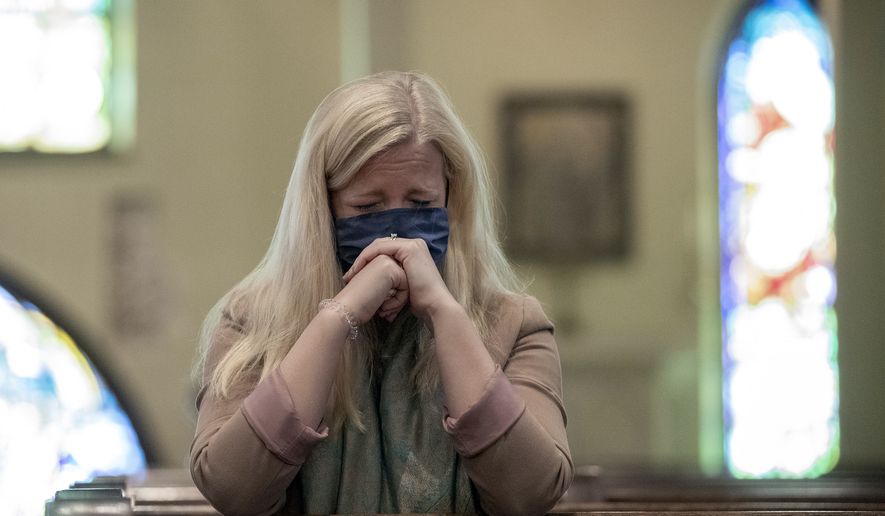America’s Protestant churches are gathering in person at a rate far greater than the beginning of 2021, a new survey from Lifeway Research reports.
But it’s unclear how many worshippers are filling the pews.
“Despite a new variant wave of COVID-19, 97% of U.S. Protestant churches met in person during January 2022, while 3% say they did not gather for in-person services,” according to a report from Lifeway Research, the polling arm of the Southern Baptist Convention.
While that percentage is “statistically unchanged” from an August 2021 Lifeway study showing 98% of churches meeting in person, the group said it was “up significantly” from a January 2021 figure of 76%.
“Almost all churches are able to meet in person for worship, though a few are struggling to re-open their doors,” Lifeway Executive Director Scott McConnell said in a statement. “Many more churches are working to restart all their important ministries and continuing to encourage people to resume in-person participation.”
More than 80% of churches responding said their attendance was “at least half of what it was prior to the pandemic,” Lifeway reported. The average U.S. Protestant congregation said attendance is 74% of what it was before COVID-19 closures. That would mean a quarter of churchgoers are still absent.
“People’s return to in-person worship services has stalled,” Mr. McConnell said. “There has been virtually no change in average attendance since August 2021. Some of this is the direct impact of COVID with people getting sick, needing to quarantine or being at high risk. But this also likely includes healthy individuals choosing to not return.”
Some churches are bucking the trend.
“For the month of February, we’ve been probably averaging probably around 215 a week,” said the Rev. Chip Bungard, lead pastor of the First Baptist Church in Newton, Kansas. “So we’re pretty close to pre-COVID numbers.”
Mr. Bungard said the church eliminated its livestreaming of Sunday worship services, a move that boosted in-person attendance.
“We wanted people to come to church,” he said. “Even before COVID, that was a frustration: you would follow up with someone who missed [worship] on Sunday. And they’ll be like, ‘Oh, sorry, I couldn’t make it, but I watched you online.’”
By eliminating the live broadcast — recordings are available online the following Wednesday, he said — and having only one Sunday morning service instead of the two before the pandemic, Mr. Bungard said the sanctuary is filled.
“We don’t have any plans to go back,” he said. “We were at two services for years, and we still probably should be at two services. But we decided to bring everybody for one.”
Another observer, Shelton Smith, editor of the Sword of the Lord newspaper in Murfreesboro, Tennessee, said some of the drop-off in attendance results from pastors who ignore the core message of Christianity.
“A lot of churches are not majoring on the gospel, they’re not majoring on getting people saved,” said Mr. Smith, an independent Baptist pastor. “They’re not majoring on making the case like it needs to be made. And they don’t have the programming to back it up.”
Those issues of emphasis and promotion were common in many Protestant congregations before the pandemic, a 2019 Lifeway study showed. That poll found that 60% of those churches had plateaued or were declining in attendance.
For 2018, the survey showed, more than 50% of those churches saw fewer than 10 people make new professions of faith in Christ.
Mr. Smith, whose newspaper emphasizes “personal soul winning” for congregations wishing to fulfill their calling, said churches should be “out in the neighborhoods, running bus routes” to bring people to church.
“Christians need to learn how to promote what they’re doing and promote it well,” he said. “And there’s nothing unspiritual about standing up and sounding the trumpet” to promote their message.
• Mark A. Kellner can be reached at mkellner@washingtontimes.com.




Please read our comment policy before commenting.